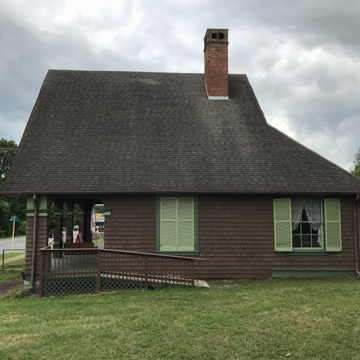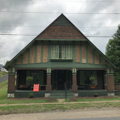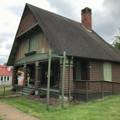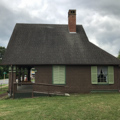Built as offices for the Shenandoah Land and Improvement Company during the county's period of boom development, the building blends Queen Anne with features of Craftsman houses. False half-timbering in the steeply pitched front gable and sophisticated window groupings are suggestive of Queen Anne, yet this is tempered by the use of rustic materials and details such as massive shingled porch piers, shingled wall and gable-end surfaces, and exposed rafter ends. Shenandoah's boom was short-lived, and in 1902 Mary and Edna Stevens purchased the building for use as a house. The Shenandoah Heritage Center acquired the house in 1974 and it is now used by the Chamber of Commerce.
You are here
Stevens Cottage
If SAH Archipedia has been useful to you, please consider supporting it.
SAH Archipedia tells the story of the United States through its buildings, landscapes, and cities. This freely available resource empowers the public with authoritative knowledge that deepens their understanding and appreciation of the built environment. But the Society of Architectural Historians, which created SAH Archipedia with University of Virginia Press, needs your support to maintain the high-caliber research, writing, photography, cartography, editing, design, and programming that make SAH Archipedia a trusted online resource available to all who value the history of place, heritage tourism, and learning.
























